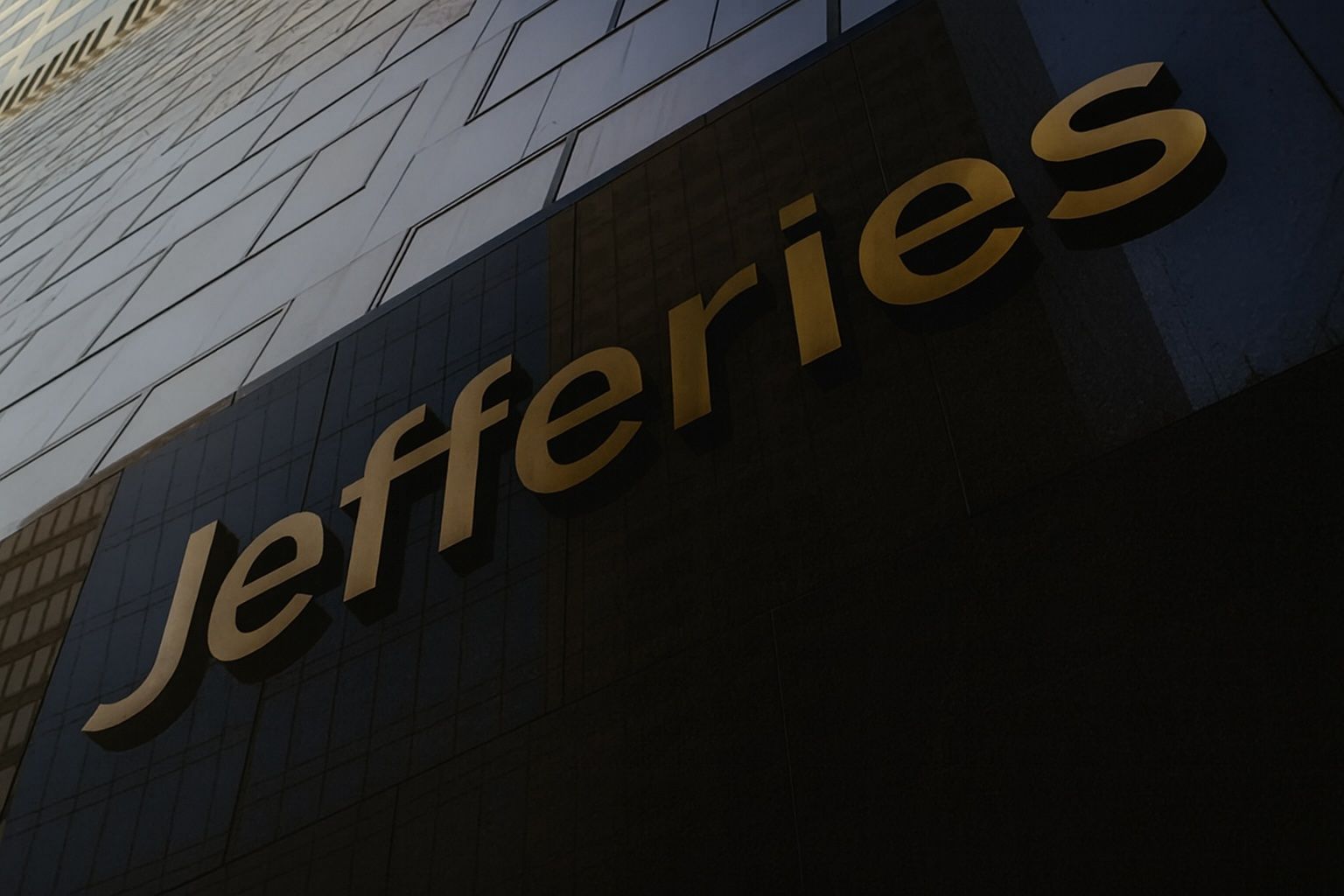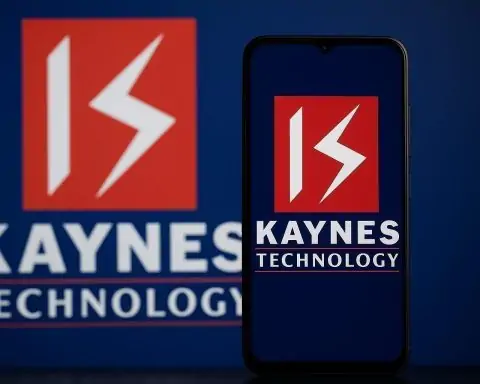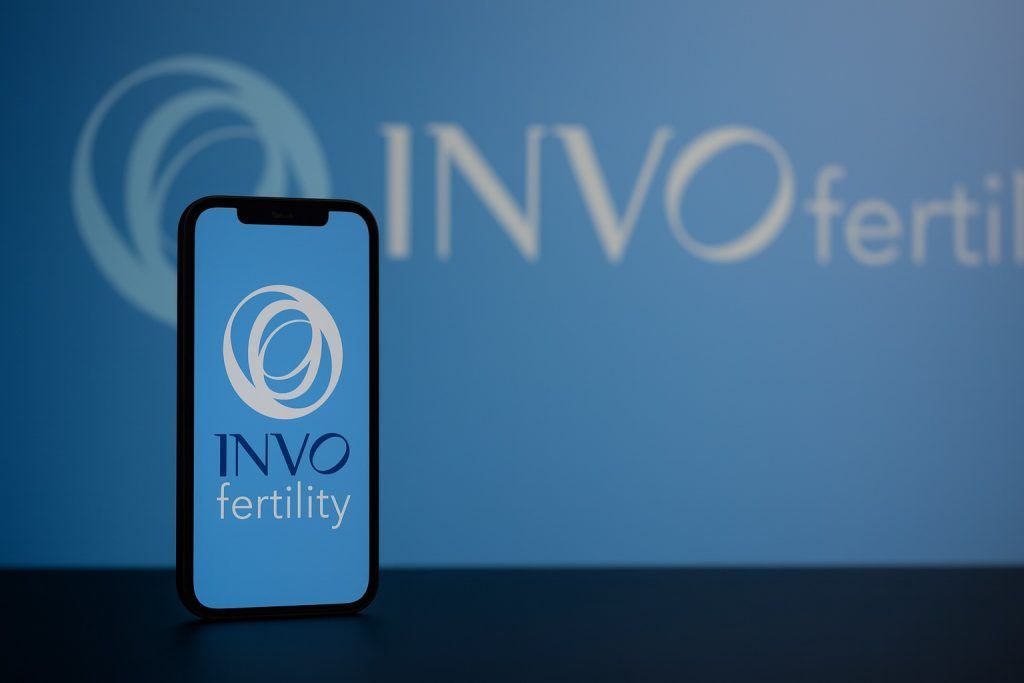- Steep Selloff: Jefferies Financial Group (NYSE: JEF) shares plunged over 5% on October 16, hitting ~$50–51 intraday – the lowest since June – amid news of shareholder lawsuits over its exposure to a client’s bankruptcy [1] [2]. This extends a slide from the mid-$60s in late September; JEF is now down ~25% in October and ~37% year-to-date [3] [4].
- Q3 Earnings Beat, But Costs Weigh: Jefferies’ fiscal Q3 2025 results (for quarter ended Aug. 31) topped expectations with $1.01 EPS (vs. $0.80 consensus) and $2.05 B revenue (+21.6% YoY) driven by record advisory fees [5] [6]. However, expenses jumped ~20%, fueling investor caution. The stock initially fell ~3–4% post-earnings (despite the beat) as non-interest costs surged to $1.72 B [7] [8].
- First Brands Fallout: In early October, Jefferies revealed a $715 M exposure (via a managed fund) to First Brands Group, a major auto-parts supplier that filed bankruptcy on Sept 28 [9] [10]. JEF stock tumbled ~8% on Oct. 8 after disclosing this link [11]. Jefferies clarified its direct at-risk investment is only ~$45 M (receivables and loans), an amount Morgan Stanley analysts called “manageable” relative to Jefferies’ capital base [12] [13]. Executives insist any loss is “readily absorbable” and not a threat to the firm’s financial health [14] [15].
- Investor Reassurance & Lawsuits: CEO Rich Handler and President Brian Friedman issued a public letter (Oct. 12) asserting the stock’s slump was “meaningfully overdone” and would correct as facts emerge [16]. This helped shares rebound ~3% earlier in the week [17]. However, multiple law firms announced investigations into whether Jefferies misled investors about First Brands, contributing to the latest sell-off [18].
- Strategic Boost from SMBC Alliance: Japan’s Sumitomo Mitsui Banking Corp (SMBC) is investing $912 M to raise its stake in Jefferies from 14.5% to 20% [19] [20]. Announced Sept. 19, this expanded partnership will launch a joint venture in 2027 to bolster Jefferies’ Japanese equities and capital markets business [21]. The move deepens an alliance dating to 2021 and is aimed at capturing surging cross-border deal flow between the U.S. and Japan. Jefferies’ management expects the SMBC stake to significantly boost profits within five years [22].
- Analyst Outlook – Cautious Optimism: Wall Street is split but leans positive. The median analyst price target is ~$73–74, implying ~40% upside from current levels [23]. Goldman Sachs reaffirmed a “Buy” rating this week but trimmed its target from $84 to $74 [24]. BMO initiated at “Market Perform” with a $69 target [25], while Morgan Stanley rates Equal-Weight with a $74 target [26]. Overall consensus is 3 Buys, 3 Holds [27]. Analysts praise Jefferies’ strong investment banking rebound but note concerns like higher expenses, “high leverage and negative cash flows,” and the need for tighter risk management [28] [29]. The stock now trades around 8.5× forward earnings and offers a 3% dividend yield ($0.40/quarter), which some see as attractive if headwinds abate.
Jefferies Financial Group’s logo displayed on the trading floor of the New York Stock Exchange. The stock has seesawed amid strong earnings and fallout from a client’s bankruptcy. [30] [31]
Earnings Soar on Dealmaking Rebound
Jefferies’ latest quarterly report showcased robust growth as investment banking activity roared back to life. For Q3 (Jun–Aug 2025), net revenue jumped 21% YoY to $2.05 billion [32] [33]. Advisory fees hit a record $656 M (+11%), reflecting a surge in mergers & acquisitions – an encouraging sign for Wall Street dealmakers [34]. Equity underwriting revenue leapt 21% to $181 M amid a recovering IPO market, and debt underwriting contributed $249 M [35]. Total investment banking and capital markets revenue climbed ~15% to $1.86 B [36].
The earnings beat was clear: adjusted EPS of $1.05 trounced the ~$0.79 consensus [37]. Net earnings of $224 M jumped 34% from a year ago [38] [39]. Jefferies’ return on tangible equity hit 13.6%, up from ~12% a year prior [40] [41]. Executives highlighted broad strength – equities trading revenue surged 26% YoY, offsetting an 18% dip in fixed-income trading [42]. Asset management also impressed, with revenue tripling to $177 M (from $59 M) on strong fund performance [43]. The firm boosted its quarterly dividend to $0.40 per share, underscoring confidence in cash generation [44] [45].
“Record revenues in investment banking advisory… increased market share… and an improvement in the environment for M&A and capital formation,” CEO Rich Handler noted, reflecting on the firm’s momentum [46]. President Brian Friedman struck an optimistic tone as well, saying M&A activity continues to pick up with business confidence holding and interest rates “starting to come down” – a trend they expect to continue into 2026 [47]. Indeed, Jefferies’ deal pipeline appears healthy: it was lead bookrunner on recent high-profile U.S. IPOs like Firefly Aerospace and crypto exchange Bullish [48].
However, not all was perfect. Investors zeroed in on rising expenses: Non-interest costs hit $1.72 B for the quarter, nearly 20% higher YoY [49] [50]. Compensation expense remained elevated at ~53% of revenue, and non-compensation costs (technology, clearing fees, business development) also jumped with the uptick in trading activity [51]. This squeeze on margins tempered the market’s reaction to otherwise stellar results. Jefferies’ stock slid ~3–4% immediately after earnings, reflecting concern that cost discipline must improve to fully capitalize on revenue growth [52] [53]. “The robust revenue growth… indicates operational strength, but the rise in expenses likely prompted investor caution,” observed analysts in a post-earnings recap [54]. Still, many on the Street view the sell-off as an overreaction given Jefferies’ strengthening franchise.
First Brands Bankruptcy: Limited Damage, Big Lessons
The biggest cloud over Jefferies this month has been the First Brands Group saga – a dramatic corporate meltdown that ensnared Jefferies through a financing fund. First Brands, an aftermarket auto-parts conglomerate (owner of TRICO wipers, FRAM filters, etc.), collapsed under $10+ B of debt amid accounting irregularities and halted payments to creditors [55] [56]. When the company filed Chapter 11 on Sept. 28, it exposed a tangle of hidden liabilities – including nearly $2 B of off-balance-sheet factoring debt and possibly $2.3 B of “vanished” funds in supply-chain finance programs [57] [58].
Jefferies had been First Brands’ go-to lender, chiefly through an investment vehicle called Point Bonita Capital managed by Jefferies’ Leucadia Asset Management arm [59] [60]. Point Bonita had purchased hundreds of millions worth of First Brands’ receivables (invoices owed by retailers like Walmart and AutoZone) to provide the company with liquidity [61]. As First Brands unraveled in September, it stopped remitting payments on those receivables to Point Bonita, effectively defaulting on the arrangement [62] [63]. Jefferies quietly halted a planned $6 B debt refinancing for First Brands in August as red flags mounted [64]. By Oct. 8, Jefferies moved to come clean on the situation, disclosing that Point Bonita held ~$715 M of First Brands’ receivables and loans in total [65].
Crucially, Jefferies emphasized that most of that exposure belongs to the fund’s outside investors, not Jefferies itself [66] [67]. The bank’s direct stake at risk is limited to: (a) its $113 M equity investment in the Point Bonita fund, and (b) roughly $48 M in First Brands loans held via a 50%-owned credit partnership [68]. Analysts calculate that even in a worst-case (if those receivables and loans are total losses), Jefferies’ hit would be on the order of $40–50 M [69]. “Manageable” is how Morgan Stanley’s team described that scenario, given Jefferies’ ~$11 B capital base [70]. In other words, a ~$45 M loss is a headache but not catastrophic for a firm of Jefferies’ size [71].
Jefferies’ leadership has been in damage-control mode to reassure investors. “We intend to exert every effort to protect the interests and enforce the rights of Point Bonita and its investors,” the bank declared, vowing aggressive legal action in the bankruptcy process [72] [73]. On Oct. 12, CEO Rich Handler and President Brian Friedman published a letter to shareholders detailing Jefferies’ true exposure – just $43 M in receivables and $2 M in loans after accounting for third-party capital [74]. They stressed that any losses “can readily be absorbed and do not threaten our financial condition or business momentum” [75]. Furthermore, management flatly stated that the stock’s sharp drop had become “meaningfully overdone” and expected a rebound as the “facts and range of outcomes are better understood” [76].
Initially, this candid approach seemed to help. Jefferies stock bounced about 3% on Oct. 13 after the firm’s “nothing to worry about” message and reassurance of “ample liquidity” [77] [78]. But any goodwill was short-lived. By Oct. 16, as Jefferies held its annual Investor Day, multiple shareholder-rights law firms announced they are investigating whether Jefferies failed to disclose its First Brands risks earlier [79] [80]. The specter of potential lawsuits – however routine these class-action probes are after a stock plunge – added fuel to the sell-off. Investors had already been anxious for detailed answers on how First Brands went so wrong under Jefferies’ watch [81]. The result: JEF shares sank another 5–9% during the Investor Day, at one point hitting ~$49.50 [82] [83]. Including this slide, the stock has now tumbled over 30% since mid-September and nearly 25% in just the first half of October – on track for its worst month since March 2020’s pandemic turmoil [84].
While the direct financial hit from First Brands appears contained, the episode has raised questions about Jefferies’ risk oversight. Point Bonita’s outsized exposure to a single troubled borrower and the delayed disclosure concern analysts and investors. Jefferies insists it acted quickly once issues were known, and notably, credit ratings agencies have not downgraded the firm [85]. But scrutiny is coming: regulators and industry observers are examining how a mid-sized investment bank like Jefferies became so entwined in a highly-leveraged company’s opaque financing web. The situation underscores the balance of risk and reward in Jefferies’ niche businesses – a reminder that private credit investments can carry hidden dangers along with their lucrative yields.
Investor Day Highlights: Growth Plans Amid Turbulence
Despite the turmoil, Jefferies used its Oct. 16 Investor Day to emphasize a positive long-term vision. In a detailed presentation, executives touted the company’s strengths and growth initiatives. Jefferies reported it has gained market share in key businesses and achieved record revenues in areas like M&A advisory and equities trading [86] [87]. Management outlined strategic investments in technology and talent recruitment that they believe will fuel future expansion [88] [89].
A major focus was the expanding partnership with SMBC (Sumitomo Mitsui). Jefferies confirmed that the Japanese banking giant’s 20% stake infusion will deepen collaboration across investment banking products. The firms plan to integrate teams for Japanese equity capital markets, research, and trading via a joint venture by 2027 [90]. This alliance is already paying dividends: Jefferies expects to leverage SMBC’s balance sheet and relationships to win more cross-border deals, while SMBC gains a “seat at the table” in U.S. leveraged finance and M&A alongside Jefferies [91] [92]. The companies noted that Japan’s stock market is booming and Japanese corporates are increasingly seeking overseas growth – trends their partnership is poised to exploit [93] [94].
Jefferies’ leadership also struck an upbeat tone on the macro outlook. They foresee a resilient U.S. economy, “easing interest rates, and steady business confidence” supporting continued deal activity into 2026 [95]. Indeed, even as market volatility remains, management believes Jefferies is “more strongly positioned than ever” – citing its broadened global reach, stronger client relationships, and new joint-venture partners (like SMBC) as competitive advantages [96] [97]. In their view, the recent setbacks are temporary, while the long-term trajectory – as the last major independent investment bank outside Wall Street’s giants – remains attractive.
Still, Jefferies acknowledged the challenges. In the short term, the stock may stay volatile as investors digest the First Brands episode and the firm works to prove that expenses are under control [98]. “Effective expense management will remain critical,” management conceded, even as they express confidence in growing revenue drivers [99] [100]. They also noted broader market headwinds – from interest rate uncertainty to geopolitical risks – that could intermittently weigh on the financial sector.
For investors, Jefferies presents a nuanced picture. On one hand, the company is delivering clear growth in its core businesses: it’s a mid-sized bank punching above its weight in M&A advisory and capital markets, even outpacing some larger rivals in certain niches [101]. Its alignment with trends like a revival in IPOs and a potential Fed rate easing cycle bodes well for continued momentum [102] [103]. The strategic tie-up with SMBC adds a unique growth avenue (and a backstop of capital) that pure U.S. peers lack. On the other hand, Jefferies’ share price decline this year (–36% YTD [104] [105]) signals caution. The First Brands affair exposed governance risks and hit sentiment at an inopportune time. Additionally, Jefferies’ profitability, while solid, hasn’t yet assuaged worries over cost creep and credit exposures.
Forecasts and Market Reaction
Looking ahead, analyst opinions vary but generally see significant upside if Jefferies navigates current headwinds. The average price target of roughly $73 is about 35% above the latest ~$54–55 trading range [106] [107] (and even more above the Oct. 16 intraday lows near $50). Price objectives among major banks cluster in the upper-$60s to mid-$70s [108] [109]. For instance, Goldman Sachs’ $74 target implies confidence that Jefferies’ fundamentals remain strong despite recent hiccups [110]. Notably, even after cutting his target from $84, Goldman analyst James Yaro maintained a Buy rating on JEF [111]. Similarly, Morgan Stanley’s analysts (Equal-Weight) nudged their target up to $74 after Jefferies’ earnings beat, suggesting the firm’s core performance exceeded their earlier expectations [112]. A few are more cautious – BMO’s neutral stance with a $69 target reflects a wait-and-see approach on risk management and expense control [113].
Market sentiment, in turn, is mixed. Jefferies’ valuation has come down to around 8–9 times forward earnings – a discount to the broader market and to larger Wall Street banks, partly due to its smaller size and recent volatility. The sell-off has also boosted the dividend yield above 3%, offering some downside cushion. Bulls argue that if the First Brands losses truly max out around $40–50 M (pennies per share) [114], then the stock’s ~20% slide since that news broke appears overdone [115]. “Big price drops can present good opportunities to buy high-quality stocks,” notes one investing outlet, which pointed out that Jefferies’ 5-year shareholders have more than doubled their money even accounting for this pullback [116]. They see Jefferies as a nimble capital-markets player that will continue to thrive as M&A and IPOs rebound, and they view the SMBC alliance as a transformative deal that the market has yet to fully appreciate.
Skeptics, however, urge caution. They note Jefferies’ share volatility (14 moves over 5% in the past year [117]), its exposure to economic cycles, and the fact that the stock is still 38% below its 52-week high of $81.75 (reached late 2024) [118]. Some also point to the firm’s relatively high compensation ratio and leverage, which could pressure earnings if markets turn south. The recent regional bank jitters – e.g. Zions Bank taking a surprise $50 M loan loss this week – rattled the entire bank sector on Oct. 16 [119], and Jefferies was not immune. Such events show how fragile confidence can be. The credit market stress from auto-related bankruptcies (First Brands, plus subprime lender Tricolor) has sparked broader questions about hidden risks in financial institutions [120] [121]. Jefferies will need to prove that its oversight is solid to avoid any lasting damage to its reputation or investor trust.
Bottom Line: Jefferies finds itself at a crossroads of opportunity and scrutiny. The company’s core business is firing on all cylinders, capitalizing on a revival in dealmaking and trading, and it’s forging global partnerships to propel future growth. Yet, the fallout from First Brands’ bankruptcy is a cautionary tale that continues to cast a shadow in the near term. As Jefferies works to reassure stakeholders and tighten risk controls, investors are weighing the bank’s upside potential – substantial, if current earnings trends persist – against the risks of further surprises or market headwinds. With the stock now at multi-month lows and well below analysts’ targets, the coming weeks will test whether Jefferies can regain its footing. The focus will be on execution: delivering continued revenue strength while proving that recent missteps are truly contained. In the words of Jefferies’ own leaders, the firm is “increasingly optimistic” about its long-term outlook [122] [123] – now it must convince the market to share that optimism.
Sources: Jefferies Financial Group Q3 2025 Results [124] [125]; Reuters (Devika Nair/Shubham Kalia) [126] [127]; Reuters (Prakhar Srivastava) [128] [129]; Reuters (Manya Saini) [130] [131]; TechStock² (Mateusz Kaczmarek) [132] [133]; GuruFocus/MarketBeat Analyst Data [134] [135]; TradingView (Refinitiv brief) [136] [137]; StockStory/WRAL [138] [139].
References
1. markets.financialcontent.com, 2. www.tradingview.com, 3. www.tradingview.com, 4. www.tradingview.com, 5. www.reuters.com, 6. www.edgen.tech, 7. www.edgen.tech, 8. www.edgen.tech, 9. ts2.tech, 10. www.reuters.com, 11. ts2.tech, 12. ts2.tech, 13. www.reuters.com, 14. www.reuters.com, 15. www.reuters.com, 16. www.reuters.com, 17. markets.financialcontent.com, 18. markets.financialcontent.com, 19. www.reuters.com, 20. www.reuters.com, 21. www.reuters.com, 22. www.reuters.com, 23. www.tradingview.com, 24. www.gurufocus.com, 25. www.gurufocus.com, 26. www.gurufocus.com, 27. www.tradingview.com, 28. www.tipranks.com, 29. www.edgen.tech, 30. www.reuters.com, 31. www.tradingview.com, 32. www.edgen.tech, 33. www.edgen.tech, 34. www.edgen.tech, 35. www.edgen.tech, 36. www.edgen.tech, 37. www.edgen.tech, 38. www.tipranks.com, 39. www.tipranks.com, 40. www.tipranks.com, 41. www.tipranks.com, 42. www.edgen.tech, 43. www.edgen.tech, 44. www.tipranks.com, 45. www.edgen.tech, 46. www.edgen.tech, 47. www.reuters.com, 48. www.reuters.com, 49. www.edgen.tech, 50. www.edgen.tech, 51. www.edgen.tech, 52. www.edgen.tech, 53. www.edgen.tech, 54. www.edgen.tech, 55. ts2.tech, 56. ts2.tech, 57. ts2.tech, 58. ts2.tech, 59. ts2.tech, 60. ts2.tech, 61. ts2.tech, 62. ts2.tech, 63. www.reuters.com, 64. ts2.tech, 65. www.reuters.com, 66. ts2.tech, 67. ts2.tech, 68. ts2.tech, 69. ts2.tech, 70. ts2.tech, 71. ts2.tech, 72. www.reuters.com, 73. www.reuters.com, 74. www.reuters.com, 75. www.reuters.com, 76. www.reuters.com, 77. markets.financialcontent.com, 78. markets.financialcontent.com, 79. markets.financialcontent.com, 80. markets.financialcontent.com, 81. www.tradingview.com, 82. www.tradingview.com, 83. www.tradingview.com, 84. www.tradingview.com, 85. ts2.tech, 86. www.tipranks.com, 87. www.tipranks.com, 88. www.tipranks.com, 89. www.tipranks.com, 90. www.reuters.com, 91. www.reuters.com, 92. www.reuters.com, 93. www.reuters.com, 94. www.reuters.com, 95. www.edgen.tech, 96. www.edgen.tech, 97. www.edgen.tech, 98. www.edgen.tech, 99. www.edgen.tech, 100. www.edgen.tech, 101. www.edgen.tech, 102. www.reuters.com, 103. www.reuters.com, 104. markets.financialcontent.com, 105. www.tradingview.com, 106. www.gurufocus.com, 107. www.gurufocus.com, 108. www.gurufocus.com, 109. www.gurufocus.com, 110. www.gurufocus.com, 111. www.gurufocus.com, 112. www.gurufocus.com, 113. www.gurufocus.com, 114. ts2.tech, 115. www.reuters.com, 116. markets.financialcontent.com, 117. markets.financialcontent.com, 118. markets.financialcontent.com, 119. www.tradingview.com, 120. www.reuters.com, 121. www.reuters.com, 122. www.edgen.tech, 123. www.edgen.tech, 124. www.tipranks.com, 125. www.edgen.tech, 126. www.reuters.com, 127. www.reuters.com, 128. www.reuters.com, 129. www.reuters.com, 130. www.reuters.com, 131. www.reuters.com, 132. ts2.tech, 133. ts2.tech, 134. www.gurufocus.com, 135. www.gurufocus.com, 136. www.tradingview.com, 137. www.tradingview.com, 138. markets.financialcontent.com, 139. markets.financialcontent.com









